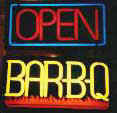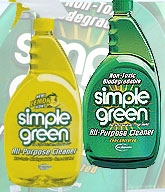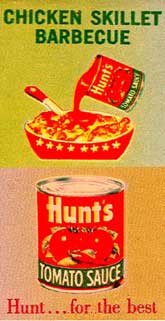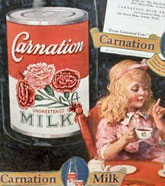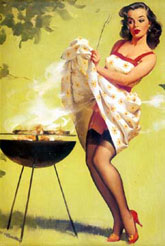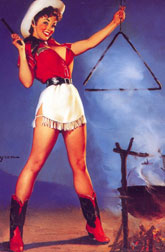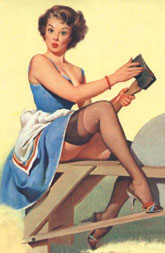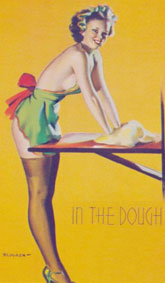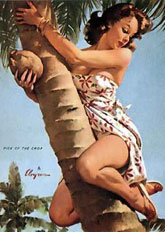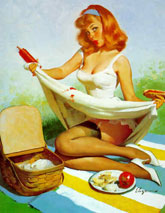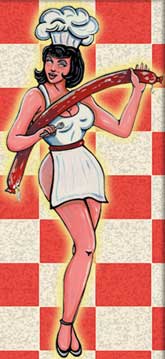Contact BBQbyDan
www.BBQDan.com
Search
KCBS BBQ Cook-Off Info
Recipes,
Smoking Meats
Recipes, Grilling
|
|
|
||||||||||||||||||||||||||||||||||||||
|
|
||||||||||||||||||||||||||||||||||||||
|
Charcoal FAQ
|
||||||||||||||||||||||||||||||||||||||
|
|
||||||||||||||||||||||||||||||||||||||
Charcoal FAQ
by Bill Wight Q: What is charcoal?
A: a dictionary or
encyclopedia definition goes like this:
Charcoal is a When charcoal is made from wood with only about 20- to 25-percent of the original volume of the wood turning into charcoal. Where does the rest of the wood mass go, you ask? Good question. Well, some of the mass of wood is water and that goes off as water vapor. Some of the wood mass is burned during the charcoal making process and the rest is volatilized. Wood contains several hundred organic compounds and many of these are volatile, meaning they can be turned into vapors. In a modern charcoal manufacturing process, wood is placed into a steel retort (a process chemist's stew pot with a lid) and cooked at high temperature with a limited amount of oxygen. During this process, many volatiles are released and captured for use as industrial chemicals. Included in this list are methanol (wood alcohol) acetic acid, acetone, turpentines, and a host of other chemicals, many of which are carcinogenic. Q: So is barbecuing and grilling with charcoal healthier than using wood? A: Yes. It is healthier for us humans to cook our meat and vegetables over a charcoal fire than over one of wood. However, the risk of getting cancer or lung disease from barbecuing and grilling over wood is quite low, orders of magnitude lower than smoking cigarettes or living in the Los Angeles California air basin. There are two forms of charcoal used in barbecue and grilling--lump and briquettes. Lump charcoal is made from hardwood and is not ground or broken up but left in pieces resembling its former shape. Some brands of lump charcoal (Lazzari Mesquite lump charcoal for example) look like black pieces of tree branches. Other brands (BBQs Galore and Martha Stewart) look just like scraps of milled hardwood lumber, which is just what they are. Q: Is it better to use a lump charcoal that is made from pieces of trees or pieces of lumber? A: This is a matter of personal preference. We as consumers have to take it on faith that a company who makes charcoal from scraps of hardwood lumber (from furniture or flooring) has taken precautions to use wood that is free from any contaminates or additives. So it probably makes little quantitative difference in your smoking or grilling what the lump charcoal looks like. The biggest complaint heard about brands of lump charcoal made from lumber scraps is the small size of much of the charcoal. It is not uncommon to open a large bag of this lump charcoal and find up to half the weight of the bag is in pieces so small that they fall through the fire grate. This, as Martha would say, "Is not a good thing." Q: Exactly what are charcoal briquettes? A: Charcoal briquettes are produced by crushing charcoal and mixing in additives, such as nitrates (to make them burn better), and clays and starches (as binders to allow pressing into the traditional shape) and other additives. Some charcoal briquette manufacturers pride themselves on making a briquette out of almost pure wood charcoal, using only starch as a binder to hold the charcoal in shape. Other manufacturers make no secret that they use a wide variety of additives. A Kingsford Company spokeswoman stated: "Briquettes are preferred by Americans for their uniform size and stable heat." She pooh-poohs concerns about their ingredients, which include: powdered charcoal, anthracite coal for long burning, limestone to create ash, starch as binders, and sawdust and sodium nitrate for quick lighting. "The starch is perfectly natural and the coal is high-quality." Q: Should I not use charcoal briquettes with additives for grilling? A: Based on several years of using Kingsford briquettes, I find them quite satisfactory for grilling. I have used Kingsford for grilling beef, pork, chicken and fish and find no discernable difference between Kingsford briquettes and other national brands. Kingsford briquettes for smoking are unsuitable due to the high ash content that builds up in the fire box and restricts the flow of oxygen. My advice is to use the least expensive charcoal briquette available in your area that gives you consistently good results. Q: I see charcoal briquettes that say they are made from 'hickory' or 'oak' or 'mesquite'. Does it really make any difference what hardwood the charcoal is made from? A: This is a tough one to a. During the charcoal making process, the volatile components of the wood are driven off by the heat. If this process is complete or nearly so, then the volatile components that give the varieties of wood their distinctive taste should be lost. I personally cannot taste any difference in the finished meat when using charcoal of a specific type of wood versus a 'non-varietal' briquette. However, I know many experienced barbecuers who swear that they can tell the difference between hickory charcoal and mesquite charcoal. For grilling, the meat is in the smoke for a much shorter period of time than in barbecuing. In barbecuing, the meat may be in the smoker for over 14 hours. On the grill, a steak, chop or piece of fish is over the fire for a few minutes. In grilling, the lid is often off the grill so the smoke contact is even less. In my opinion, I do not think most grillers could tell the difference between steaks grilled over hickory or mesquite briquettes. All I can tell you is to do some experimentation on your own. Q: Can you give me the names of some pure charcoal brands of briquettes and lump? A: There are several national brands of pure hardwood charcoal briquettes and lump. Some of these brands are, "Lazzari", "Holland", "Cowboy", "Royal Oak", "Maple Leaf", "Nature Glo", "Wildfire", and "Kroger". Q: Where can I find the pure charcoal briquettes and lump charcoal? A: Pure charcoal (lump) can usually be found with diligent searching (some supermarkets, Wal-Mart, HQ, Lowes, barbecue stores and Home Depot, etc.). There are also a few on-line sellers of pure charcoal products. The lump charcoal is sold in bags similar to briquettes. Bags of pure charcoal briquettes and lump charcoal are usually marked with the name of the wood it was made from, i.e. hickory, mesquite, oak, etc. Q: How should I start my charcoal? A: There are several ways: Use a charcoal chimney starter. Use an electric charcoal starter. Use a propane gas starter. Use starter sticks or cubes of paraffin. Use lighter fluid or self-starting briquettes. Q: I've heard that self-starting briquettes and charcoal starter fluids will give my food a bad taste. Is this true? A: Some experienced grillers believe that self-starting briquettes and starter fluids will give your meat a petroleum taste. Others say that by the time the coals are gray and ready to use, the petroleum products are long gone. My personal experience over several years is that if you use either self-starting briquettes or charcoal lighter fluid and let the charcoal burn to a gray ash coating before you put the meat on the grill, there will be NO taste of the petroleum distillates left. I often use charcoal lighter to start my charcoal and I've never had a single bad taste experience. Do your own experiments and find out for yourself. Just be sure that if you do use self-starting briquettes or lighter fluid, that all of the briquettes are covered with ash before you cook. Remember, that one briquette off to the side that did not get started still has lighter fluid in it. Q: What is the shelf life of lump charcoal and briquettes? A: Charcoal essentially has an indefinite self-life as long as the product is stored in a cool, dry place. If the briquettes or lump charcoal become damp, it will be more difficult to light. Q: Can I use lump charcoal or briquettes to barbecue or grill indoors? A: Aside from the problem of smoke, carbon monoxide and carbon dioxide are given as charcoal burns. CO (carbon monoxide) is really nasty stuff. It takes the place of oxygen on hemoglobin molecules and does not let go. So if you are exposed to enough CO, you will die of oxygen deficiency. Our recommendations is to never barbecue or grill indoors, especially in an RV. Q: I left a bag of charcoal briquettes out and it got rained on. Are they still any good? A: If you let the charcoal dry out completely (like on a hot summer day with them spread out in a single layer in the sun), chances are it will be OK.
Q: How many charcoal briquettes does it take to grill? A: From the Kingsford Web site:
A: From the Weber Grill Recipe Booklet:
|
||||||||||||||||||||||||||||||||||||||
|
||||||||||||||||||||||||||||||||||||||
|
|
||||||||||||||||||||||||||||||||||||||
|
|
||||||||||||||||||||||||||||||||||||||

